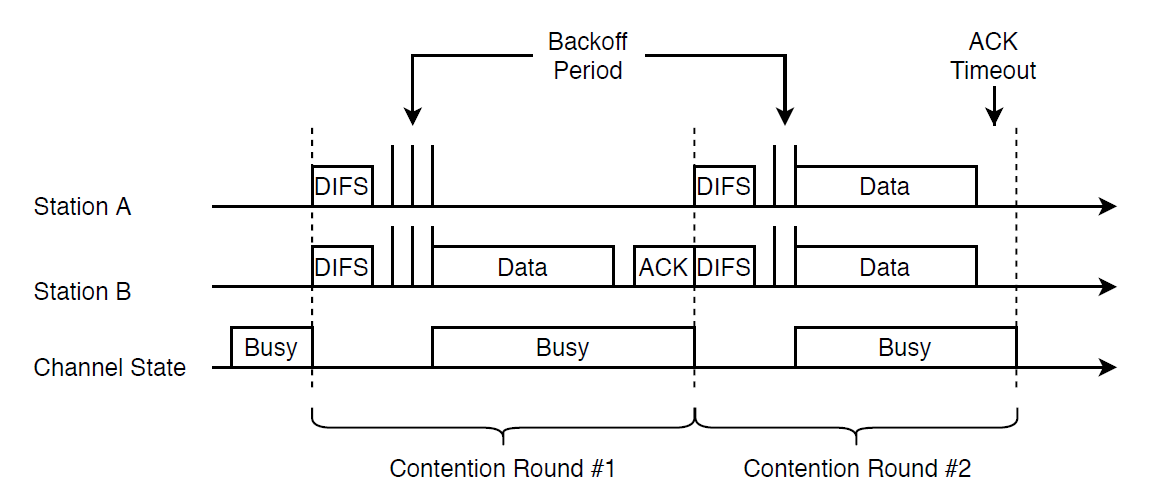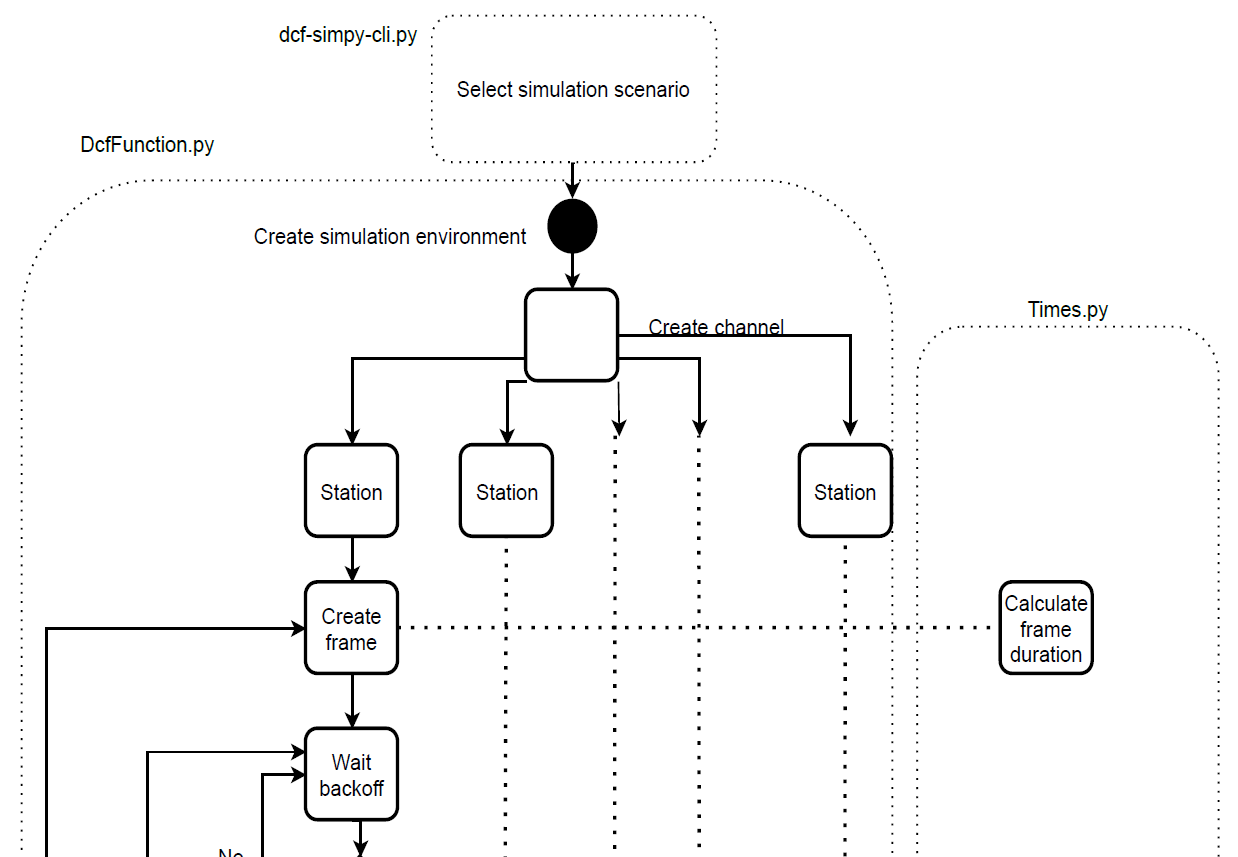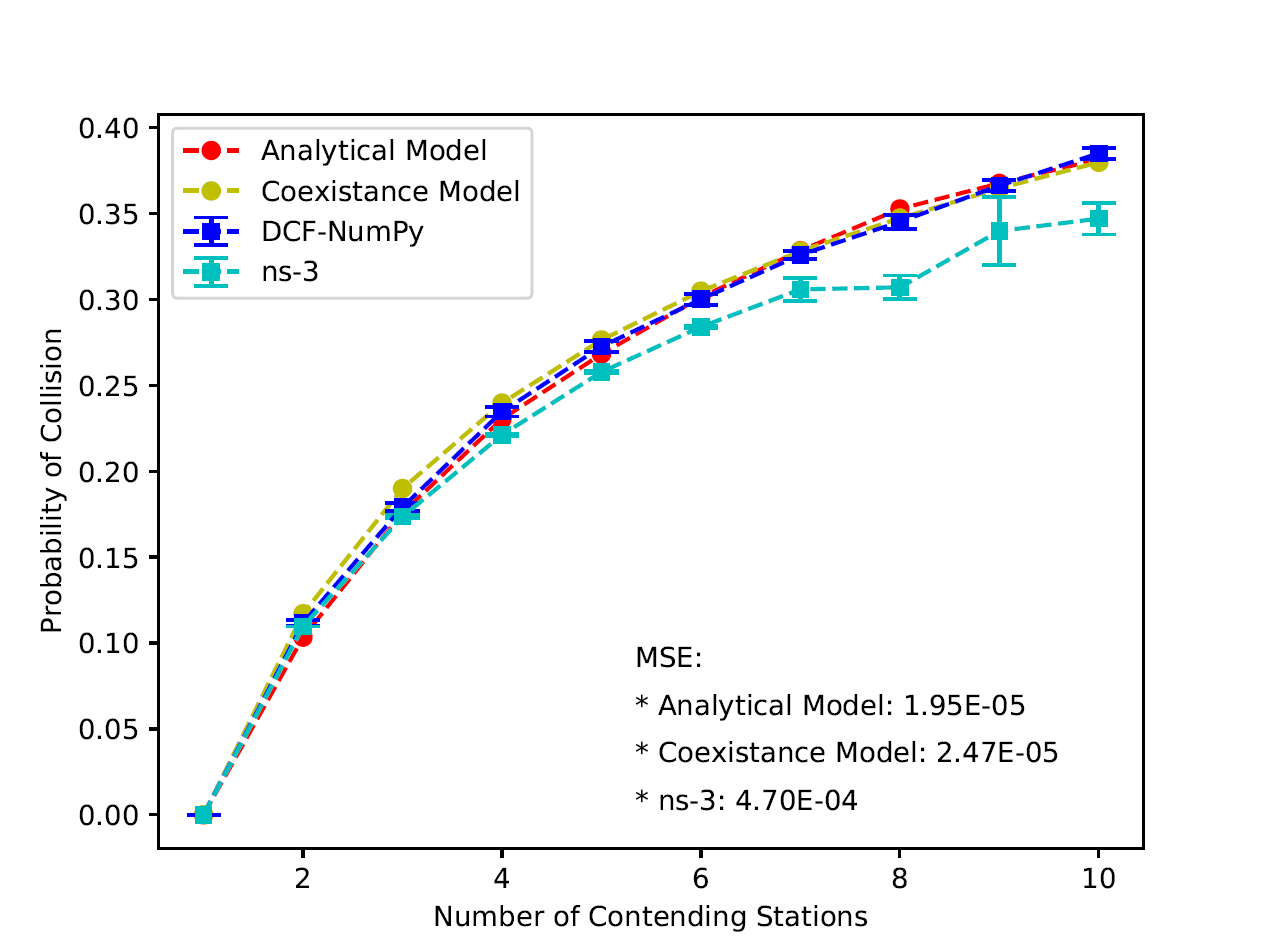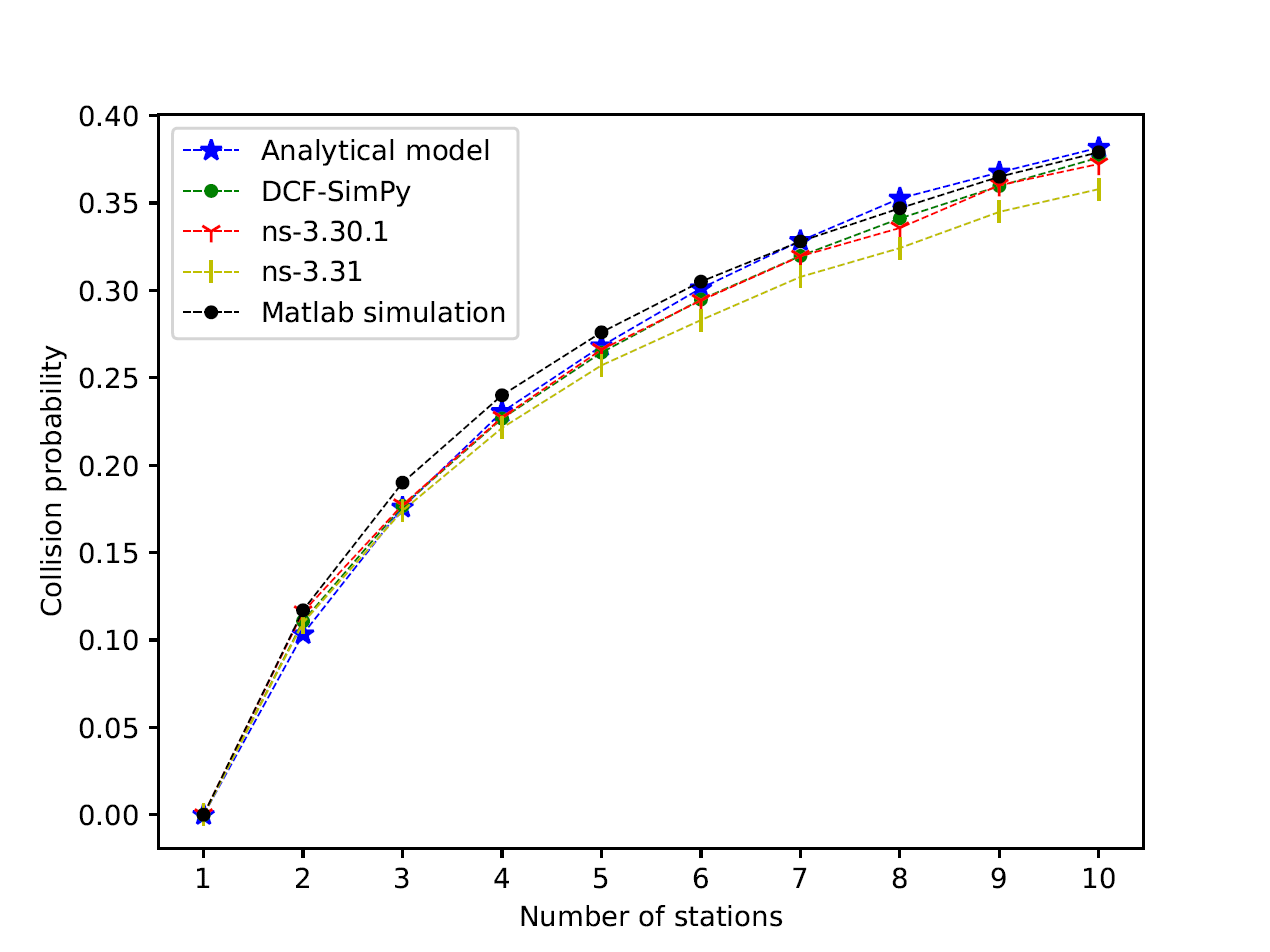Last year I proposed a topic for an engineering thesis and I’m happy to report that two students have separately developed two Python-based IEEE 802.11 channel access simulators:
Both tools simulate channel access for 802.11’s distributed coordination function (DCF) assuming 802.11a PHY parameters and network saturation. Also, the code for both tools is available on GitHub.
DCF-NumPy is a Monte Carlo simulator which loops over 802.11 contention rounds to determine if a single station wins the contention (successful transmission) or if more than one (leading to a collision). The NumPy library is used to store various simulator parameters (such as stations’ current backoff values) in matrices. The simulator is a Python adaptation of the Matlab simulator used in Downlink channel access performance of NR-U.

DCF-SimPy is a discrete event simulator based on the SimPy library. Each contending station is instantiated as a separate process and the channel – as a shared resource. The simulator iterates over events (things that change the state of the system), such as the start and end of a transmission. This is a similar approach as used in ns-3, although here we do not simulate the whole Internet stack but only the data link layer.

Both simulators have been validated with analytical DCF models, a Matlab simulator, and ns-3 yielding very good results:


The code of both simulators is easy to follow and they can be used as playgrounds for implementing and testing various channel access mechanisms in shared channels.